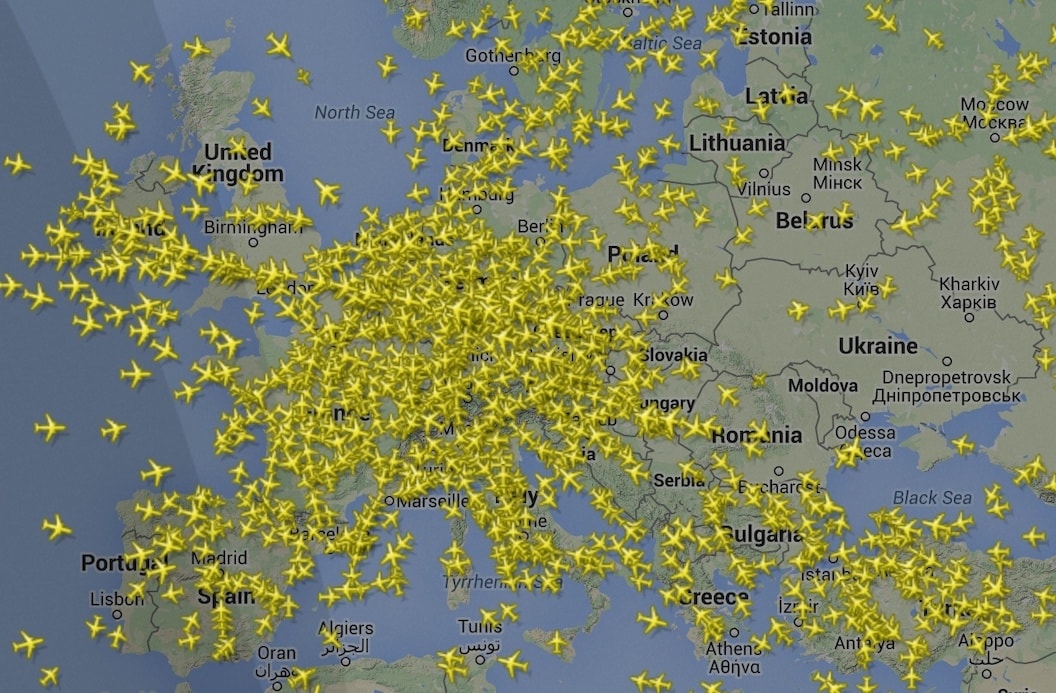
Greta Thunberg famously crossed the Atlantic ocean on a racing yacht this summer to attend climate talks in the US.
She is currently coming back across the ocean again, aboard the 48 foot catamaran La Vagabonde, now that COP25 has been re-located to Madrid. As Greta said during her initial trip, ‘By stopping flying, you don’t only reduce your own carbon footprint, you also send a signal to other people that the climate crisis is real.’ But most other attendees at the summit will be travelling there by plane. Could sailing the Atlantic ever be an option for the rest of us?
Ross Porter from VoyageVert certainly thinks so. His idea is to build an enterprise that offers fare-paying passengers a way to sail across the Atlantic, not on energy-hungry cruise ships, but on a fast sailing vessel. The sailing passenger ship will be like nothing we’ve seen before: big, comfortable, multi-hulled, powered by sail, and with a sustainably-fuelled auxiliary engine.
"Ross Porter from VoyageVert wants to build an enterprise that offers fare-paying passengers a way to sail across the Atlantic."
Flying to America from the UK involves a huge amount of greenhouse gases. For a return flight to Boston the emissions stand at about 1.8 tonnes of CO2-equivalent per passenger. Touching down in New York will be 1.9 tonnes, Miami 2.4, and San Francisco a whopping 2.9 tonnes. With recommendations for our personal carbon footprints not to exceed 2.3 tonnes each per year, we can see that there is really no room in the budget for a transatlantic flight.*
So, what’s the alternative? Well, if you are travelling for a holiday, we recommend you consider destinations closer to home. But if, like Greta, you really need to go to the USA, for work or family reasons, could a passenger sailing ship really be a viable alternative?
VoyageVert’s new vessel will require 46 highly-skilled crew to transport 200 passengers, so it’s not surprising that a passage will be expensive, at least at first: the price is expected to be around £3,000-4,000. That’s far more than a plane ticket (though not far off business class). It is, however, comparable with a suite on the Queen Mary II ocean liner.
Obviously, sailing is much slower than flying. It is planned that the ship will be capable of covering about 550 miles in 24 hours. Even at that impressive speed it will take over a week to travel from London to New York.
"Sailing is much slower than flying. It is planned that the ship will be capable of covering about 550 miles in 24 hours."
But that is definitely not the point. The age of flight has given us the means with which to travel far and fast, but through doing that we lose sense of the journey. We forget how vast the planet is when we can jump between continents with such little effort. Travel writer David Charles writes: “We buy a plane ticket and expect to be there now. Not only is this unrealistic, it makes us ungrateful travellers.”
And the ocean is our planet’s greatest wilderness. For anyone who has travelled across the Atlantic under sail, it’s an unforgettable experience, filled with encounters with marine wildlife, un-equalled views of the night sky, and a very great sense of how vast our planet is. Slow travel not only allows time to build anticipation and excitement, but allows us to connect far more meaningfully with our surroundings. There's a natural adjustment to new climates and time zones, as well as the sense that the journey is just as much a part of the experience as the destination.
So if it’s true that there is no future for our civilisation in which long-haul flights can continue, sail might become once again the only way to travel between continents. Soon it might not be airlines jostling for our custom, but ever-faster, cheaper, more efficient sailing yachts.
Perhaps we should start dreaming of flotillas of white-sailed passenger ships crossing the oceans, coming into harbour at the centre of all the world’s great coastal cities. That may sound utopian, but, as Greta has said, change is coming.
VoyageVert is currently looking for investment. To support VoyageVert with a donation or find out about opportunities for investment, visit their website: voyagevert.org
If you can’t wait, there is also information on the VoyageVert website to help if you are interested in crewing on a yacht or working your passage on one of the small but growing number of sail cargo ships.
*Flight emissions data from flightemissionmap.org




